Hangzhou China/Western Digital, My Passport Essential SE, A Review

|
• Taste Hotel • Evason Phuket Resort & Six Senses Spa • Mangosteen Resort & Spa • Ayara Hilltops Resort and Spa |
I have some unfortunate news to report on this project and total 100% transparency is how I feel this should be handled. My planned beneficiaries of this project, innocent very much in need children at a certain orphanage, have fallen victim to their local manager who we have found cannot currently be trusted and I doubt this is likely to change. Decisions need to be made if we're going to carry this project forward and if so who the new beneficiaries will be. I do expect this project to generate significant revenue so I take it very seriously. As you read this I'll be back in the Mae Sot area investigating further. I'll keep you informed. For now I'll still collect images with the intention of making the best most meaningful mosaics possible and as always, I'm asking for and will greatly appreciate your help with the images.
We are still accepting (and pleading for) images of children from SEA. No matter how terrible you think
they are, please send them in anyway. These images will be used to complete a set of 3 high quality mosaics which will be sold to benefit the Karen and Burmese Orphans living in the orphanages and refugee camps. The more images the better, I can
use all you have. Please take the time to go through your images for anything you think might help. If you missed the "No Place to Call Home" special, you can
click on the link and read more about this. Thank you! info@BangkokImages.com
Quick Click Links
Feature Photograph
Hangzhou China Western Digital, My Passport Essential SE, A Review
Photography News of Interest
Readers Submissions
Readers Questions A Snapshot of Bangkok Images Week in Review
Infocus Blog, UnderstandingT
Feature Photograph *menu

Canon 5d Mark II, 300mm F2.8L IS USM @F8 1/250th ISO 250
Sometimes I really like an image and I want to use it for the Feature Photograph, yet I can’t find the words. It’s more difficult than it seems trying to explain why you like something, and often when the words do come, they come out disjointed and perhaps cautious. And so this story starts with me looking at this image for weeks trying to find the words. Yes, weeks..
This image is significant because a good image catches your attention in a big way and if it’s really good it gives you pause, or in other words it makes you think. I won’t argue if this is a good image or not, but I will tell you it’s caught my attention in a big way and provided hours of thought. Perhaps it’s best if I tell you what I saw before I made the capture, and how the technical and post processing helped me illustrate this vision.
It was a terribly hot and sunny morning at Safari World. No color, no clarity, the air was so dirty you could cut it with a knife. The sky was hot white, and the air so still the mozzies could control their flight. What a rotten day I was thinking. And then I noticed these three pelicans. They didn’t seem to notice the bad day as they went about preening themselves and socializing while sitting on their log. It struck me that these three pelicans were in a world of their own, separate from, but part of, the bigger world around them. How nice it would be to control our own isolation. Better to photograph it!
Technically it was a bit challenging as their natural setting was bland and the light terrible. So I narrowed it down to the essentials: three pelicans, a great amount of detail, and engagement in their activities. With this in mind I selected F8 to achieve sufficient depth of field (DOF) to include all three birds and in this I was mostly successful.
F11 would have given me more DOF, but diffraction at F11 would have robbed me of detail. Having selected an aperture I then underexposed the metered scene by 2 stops using my shutter speed and ISO controls. I wanted enough shutter speed for a high degree of critical sharpness, but not go too high in ISO where I’d lose noticeable detail. Their bright white feathers angled towards the sun were at least 2 stops brighter than the green background. A handheld spot meter confirmed this. Capture made.
Processing was simple. I cropped to tighten up the frame and show only the essentials, adjusted the levels for the proper contrast, and used the gradient method to make my B&W conversion, and then once more tweaked the levels. Notice the high degree of detail and definition among the layers of feathers? The natural angle of the log lent itself nicely to the composition.
Sounds like a lot of thought for just a single capture of three birds? It was. But this is the difference between ‘shooting a snap shot’ in automatic mode, and ‘making a photograph’ by choosing and controlling all the available variables presented to you. The more I look at this image, the more I enjoy it. I suspect it will be timeless.
Hangzhou China *menu
Hangzhou is a very nice city in East Central China (Shanghai area). For more than a millennia it has been on the top of the “go to” list for well-heeled Chinese to go visit. It has traditionally been a place of learning, culture and beauty. It is often mentioned in the same sentence as another city, Suzhou and usually in the context of “Heaven on Earth”. That set some pretty high expectations.
While not a divine experience it is a very nice city. If someone said “Tom, your moving to China next week, where do you want to live” Hangzhou would be on my short list to consider. It has a good blend of both manicured and natural beauty, isn’t as frenetic as the big economic engine cities and is surrounded by very pleasing countryside.
The city itself is home to many attractions. The central attraction is the “West Lake.” Walking the banks, dikes and causeways and seeing the sights is a wonderful way to spend a day.
Hangzhou is also home to a number of museums, a famous temple or two and some cool pagodas sticking up from the forested hills. I photographed my visit there with an early generation “prosumer” Nikon CoolPix 990 which was state of the art at that time.
Part 1 – Around Hangzhou
Tom Tweedel is a good friend with significant experience in China and has self-published several interesting volumes of his travels in
China complete with many great images and informative narrative. Last year he visited Thailand for the first time and I had a great time showing him around the area. Somehow he found time to put together a like 340 page book of his travels
around Thailand and you can get your copy here! I've got a copy of this book and I can tell you it's well worth it, especially for first time travelers or if you haven't seen
more of Thailand than downtown Bangkok.
When Tom agreed to become part of our small select product review team I was both excited and grateful. I hope you enjoy this and future reviews by Tom. For those whose plans include extended travel in Thailand and China I’d recommend contacting
Tom and inquiring into obtaining copies of his books. Tom Tweedel is an Austin, TX based photographer and can be reached at: tomsds@austin.rr.com

We arrived in Hangzhou by bus towards evening. The elevated position afforded us a good view of the countryside and city. One of the things I noticed was how well irrigated this area was. Every few miles we would pass over what looked like a river. Though from the speed and shape I could tell they were actually irrigation canals.

When we were in the “suburbs” of Hangzhou I saw some very interesting housing. There would be roads that would snake for miles out through flat fertile plains. Along these roads were packed rather tall bout narrow residential structures. They were 3-5 stories tall and maybe 15 yards wide. While they looked rather cookie cutter in design many of them had custom trim, rooflines or color to set them apart. Behind them was a smaller one story shed and then an intensely cultivated lot maybe 100 yards deep. They seldom occupied both sides of the road, only one. It was like a wall sprouting up from the plain.
I would have liked to have hired a taxi to come check them out and see what they were all about and who lived here. Was it the rich yuppies? The poor people who couldn’t afford a house in the city but still wanted some space? Family Compounds? Multi-family Apartments?

As we drew closer into town the density increased, I also noticed that there were a lot of funnel shaped water towers dotting the landscape in this area.

Much attention was paid to making the place green. Many of the overpasses, bridges and elevated highways were lined with planters that were overflowing with green. Compared the suck the life out of you drab and boring communist slab cities I had traveled through this really was a taste of heaven.

A typical street scene of Hangzhou, or many places in China for that matter. There were many trees in the city and transportation was multi-modal. Buses, taxis, bikes, cars. The number of bicycles is perhaps something that dates this shot. Bikes are rapidly giving way to electric scooters.

After we got settled in to our hotel room we wandered around to find a place to eat. We found a friendly enough looking cafeteria and went on in. Ordering was a bit different. They had a bunch of plates of food out on display. You went through with a ticket, marked the dishes you wanted, paid, got your ticket stamped that you had paid and then waited for your food at your table.
The food itself was nothing exceptional except for the fact that they had Crawfish. Having spent time around the Louisiana border where crawfish cooking is a fine art I was anxious to try the Chinese version. Wasn’t nearly as good as what I had back home but was interesting to see the popularity of an imported (but locally grown) dish here. Crawfish are not native to China but Chinese have found their cultivation in parallel with rice production to work very well. So well that even back home imported Crawfish from China are competing with locally grown mudbugs.

This was a night shot of one of the “shopping” streets in town. Like most Chinese cities it was quite busy after dark. But if you look closely you’ll notice something else common in most Chinese cities after dark, no street lighting. Most Chinese cities are actually quite dark at night. Public street lighting is rare outside of parks and compounds (costs money to install), when it is there it often isn’t used (cost money to run) and when it is used it often doesn’t work (costs money to repair when it breaks). Consequently most lighting you get is overflow from private sources and cars.
This is indicative of many things about China. Public spaces and the exterior of many houses and buildings, things that nobody is personally associated with or responsible for are often kept at a minimal state. If something breaks it takes a while to get fixed because the money to get it fixed is coming out of someone’s graft. But inside these same buildings it can be another world. It’s a trend that goes deep into Chinese history and culture. As China modernizes and becomes more conscious about its external image this is changing.

This beauty salon caught my eye and my camera. At the time it was rather unusual to see such a place. Beauty salons are not rare but this one was much more cosmopolitan and obvious than most. They had gone through the trouble of modifying their portion of the structure and paid some serious attention to curb appeal. The pretty boy in the nice yellow apron added a touch of color to a flashy place amid other unremarkable structures.

The view from our hotel gave us a good look at the rooflines of the city. I was surprised about how much stuff was on the roof. Looking closely there is actually a secondary “layer” on the roof made of bricks or blocks. This acts as a barrier for the sun, absorbing most of its energy and keeping the heat from conducting into the building. Roof top water tanks were also very popular. Free solar heating of your water I guess.

In addition to our visit to Westlake we caught a bus to some other attractions. Getting out of the urban core of the city an into the less populated areas was a big treat. I got to see the natural environment of Hangzhou which to my surprise included a lot of broad leafy trees. The busses seemed pretty nice, a cut above the cattle cars I had ridden elsewhere. They were still very crowded though.

Our destination for the afternoon was the Ling Yin Temple and North Peak, a connected Park. The entrance to the park was a mob of people so we elected to do the North Peak first. North Peak is arguably the highest point around and would afford some good views. We took a short, overpriced gondola ride to the peak. Exiting we were confronted by an interesting map. Can you guess where the gondola is? One thing about this and other Chinese maps, not always to scale..

Once at the top of the peak we moved up to a lookout platform and got a good view of the surrounding countryside. I was really impressed by the large swaths of undeveloped mountains with agricultural valleys. The lay of the land reminded me a lot of Western Virginia.

Looking back in another direction you could see the city core itself. Quite developed. The urban core has around 2.5 million people with 6 million residing in the greater area.

From the peak you could see the West lake and even some of the dikes that bisect it as well as more of the city.

Looking at closer locations to the peak we got a nice detailed view of a local farming compound. Seems like a pretty nice place. Good sized compound, clean looking, nice green crops. The color and seemingly good level of upkeep impressed me.

The patchwork rows for lush crops gave the place a lush, yet manicured look. I really enjoyed hanging out on North Peak and this area as a whole. It was green, quiet, beautiful yet close to a large city.

After taking our fill of the view from the North Peak we headed down into the park going down the mountain to the temple. It was a very scenic walk down a crumbling path. The weather was nice, the trees were pretty. It was a side of China I had rarely seen.

We ran into a weasel like creature on the way down which was totally unexpected. This was probably the first ground dwelling wild animal I had seen in Eastern China. There are not a lot of wild animals in China. In the countryside you might find a few stray dogs or cats, but their numbers are limited and they remain well concealed when people are around. Even in the cities you don’t see very many birds or pigeons.

It wasn’t all trees and bushes, we went through several groves of a very tall type of bamboo which my wife loved. On the way down we passed a number of people. It seems very common to go into the Temple and then climb the mountain. Not many people start at the mountain and then go down to the Temple. As got off the mountain and approached the temple grounds we saw a few residences where people lived in the woods and then got to the entrance gate. The lady working this side seemed very bored. We paid the admission fee and got in with no wait.

After getting into the Temple grounds we checked it out. The Lin Ying Temple is also known as Temple of the Soul's Retreat. It is one of the larger (and wealthier) temples in China. It originated as a monastery back around 300 AD and has been a major temple for around 1000 years. It is a very active temple with services going on alongside the throngs of tourists. Inside the main temple was a very large Buddha, but photography in the temple itself is forbidden (common in China).

On the grounds of the temple was a long winding path through the woods that lead through the Buddha grottos. These were a variety of carvings in the side of the cliffs depicting Buddha and other religious themes.

Wandering through them was an almost mystical experience, if you could ignore the tourists crawling around you and yakking away.

Despite it all if you could stand in one place for a while and focus between the ebb and flow of the crowd you could get real feel for the place and its spiritual wonder.

Exiting the temple we went back to the city. While waiting for the bus I was able to snap a picture of what was high fashion then and there, elf shoes. The longer and pointier the better. I thought it was ridiculous at the time, imagine my surprise a year or two later when women in the office here in the states started showing up with these.
Next Time –
West Lake and Beyond.
Western Digital, My Passport Essential SE, A Review *menu

Introduction
We all probably have at least 2 or 3 of these floating around in our bags or homes. Portable USB drives are very useful but have been plagued by several issues. In the past they’ve been expensive, slow, low capacity, and not as “plug n’ play” as they should be. The entire purpose of these drives is to store and transfer data with portable machines, so compatibility is mandatory.
The My Passport Essential SE helps all of these issues with its maximum 1tb capacity, improved USB interfaces for more reliable compatibility between machines, faster USB2 and USB3 interfaces, and with a $109 price on Amazon a very decent price for 1tb of portable storage.

Features
USB3
Now that they’re offering USB3 models it makes absolutely no sense to save the $5 and get a USB2 model. You might not have USB3 ports today, but your next machine will surely have USB3 and the speed increase is considerable. Instead of the 15-20mbps of USB2, you can max out these drives with at nearly 50-60mbps with USB3. USB3 devices are backwards compatible with USB2 devices.
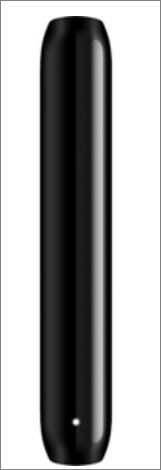
Size
These are perhaps a ½” wider and ½” less in length than many of the other like units on the market. The weight is small, the high impact plastic case promises extreme toughness, and there is even a small blue activity light. Small rubber feet keep the unit from sliding around on your desk.
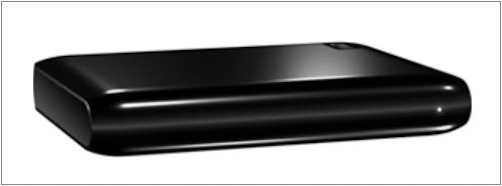
WD SmartWare
This included software lets you manage your 1tb of space with several useful features from fully automatic backup to error checking. You don’t need to use the software, but it’s nice that it’s included.
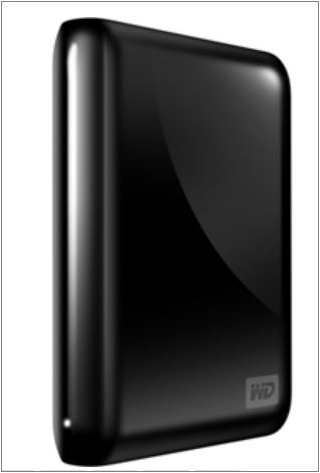
Password Protection
These drives can password encrypt your data on the fly. Pretty nice, but don’t lose your password!
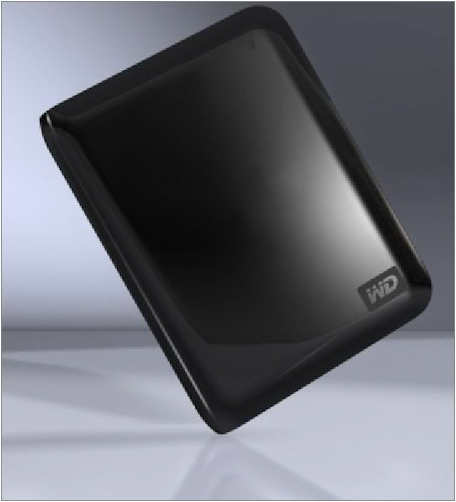
Performance
This is where it really matters. First, I can tell you that this drive automatically and easily connected, on the first try, to over 8 different machines I tried it with. This is the only USB powered drive I’ve tried with this level of compatibility.
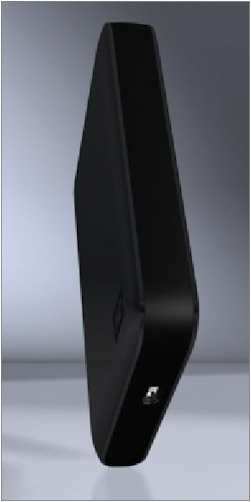
Data transfer speeds depend on what type of data you’re transferring, but speeds in excess of 55-60mbps are possible with the USB3 model. A huge improvement over USB2 models.
Power is supplied via the single USB cable/port used for data and works fine.
Summary
This is the easy part of this review. There isn’t anything not to like about this drive. It’s small, it’s tough, it’s fast, and it’s lightweight. Best of all it’s 100% compatible with everything I’ve connected it to. And it’s cheap. What else could you ask for?
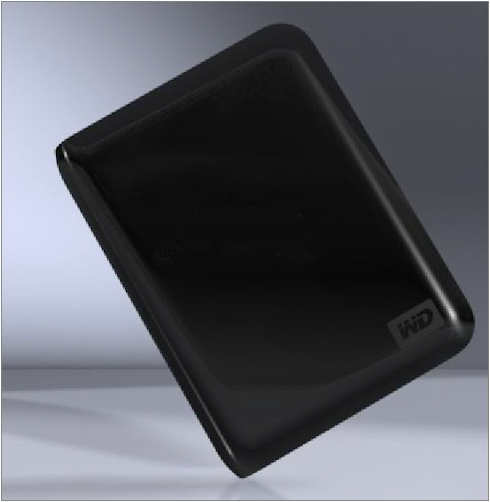
A three year warranty? Okay, it’s yours. It comes with three year warranty and they have service centers in most major countries including Thailand. On several occasions WD USA has allowed me to transfer my warranty to Thailand and I’ve received full coverage.
Wonderful devices!
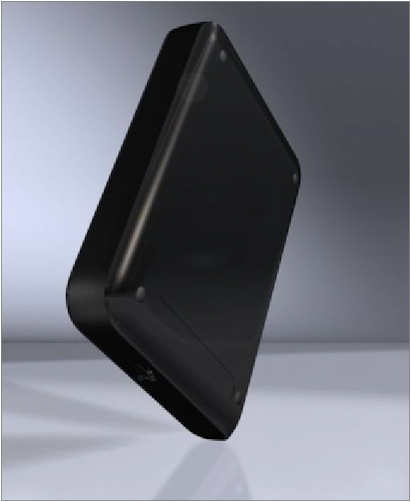
Photography News of Interest *menu
This is cool! A NAS/FTP device with software that allows you to view all your images on your IPhone, Android Phone, and other smart phones. From anywhere!

This is a long time coming, a tether lanyard to help avoid pulling your USB port from your camera body.
Studio photographers have fashioned such devices for years, now we can buy one pre-made.

This one just plain intrigues me in an Indiana Jones sort of way. A 1904 underground subway station can now be viewed if you stay on the train for a turnaround. Love the pictures, really worth viewing.

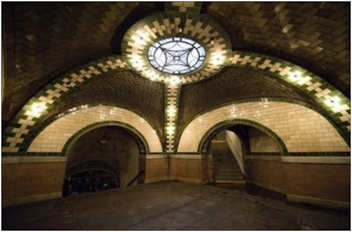
Panasonics new DMC-GF2 shows just how worried Panasonic is over Sony’s NEX series. Smaller, flatter, lighter, and
more capable.. but still with the smaller inferior 4/3’s sensor. Too bad.

Here’s one that hits close to home. Kitty Chirapongse advocates Iphoneography! Nothing new really, though I’m glad to see the enthusiasm. There is an entire genre of smart phone capable photography.

This guy must be on Cloud 9. Or maybe his camera is! Imagine how fun it would be to take photos from space using a simple balloon and paper airplane?

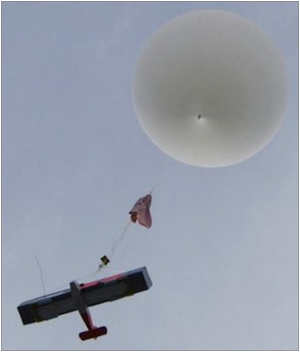
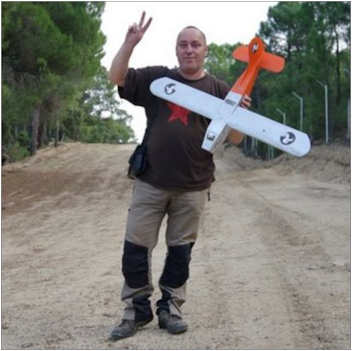
Digital Photography Review thoroughly tests Canon’s new EOS 60d. This is a nice camera, but it’s not a continuation of the 50d. It splits the model number off into an entirely new direction, like a more capable EOS 600d.

Readers Submissions *menu
Thanks Steve.
Just installed rev 3 on the NEX-5. Have not pushed any buttons yet as I was reading your Email on resize.
Waiting for the advance article from you. Tnanks
Been busy unpacking from cruise and repacking for the BKK trip on the 13th. Time for a rest soon I hope…..555
A few sunsets from the ship, notice the city skyline in the background. Used the NEX-5 on these. A report will follow on my findings using this camera.





Rick –
Fun! I love the creativity that when into the hand in the sun image. Nice!
Steve
I suspect the readers submissions will be a highly anticipated section of this column and I encourage anyone with photographs and travel accounts they'd like to share to please send them to me at: info@BangkokImages.com
Readers Questions *menu
Hi Steve
I was looking at your what's new article (20th of October) and it reminded me of some hard learnings I had on minimum focal distance last weekend with my new 85mm lens.
Attached is one shot of several that I took, obviously a bit to close.
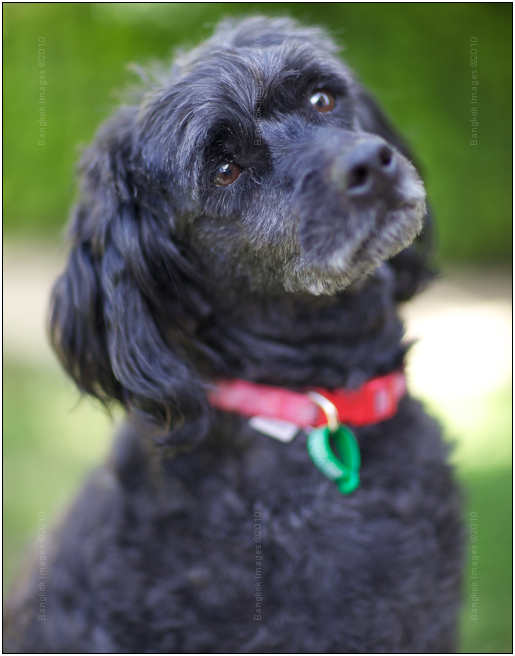
So what are the learnings here? Obviously I was too close but is there a rule of thumb for this lens when taking portraits (lets call it that for the moment)?
You know I like taking head shots so is the way out here to move back, take the shot and crop it back to the full frame head shot that I am looking for?
Really enjoy reading your site – keep up the good work.
Peter
Hi Peter –
Yes, you're just too close. With MFD (minimum focusing distance) it will be listed in the lenses specifications. I'll mentally note this distance, and then use it to judge my distance from the subject. A good technique, is to set your lens at its MFD (all the way to the stop), press down the shutter release half way, and then slowly back up until you here the focus confirmation beep. That will get you as close as you can possibly be to the subject. I'll back up a few more inches at least and let the autofocus do its job from there, over riding it as necessary.
And yes, if you can't get close enough for the framing you want, then you simply crop in post processing. If you're going to stay with that style (very close in head shots) you might want to look at a simple macro lens. This will allow you to get as close as you want, give you very sharp images, with the only limitation being the bokeh isn't that smooth until you move into the high dollar macro lenses. Another lens to consider would be your new 70-200.. At 200mm and a MFD of right under 4 feet you should be able to as close as you desire and still get good bokeh. The 85mm F1.2 is a specialized lens, designed to get you as close as most people would want to go, with the best characteristics for portraits.. which is 3 feet 2 inches at 85mm.. not as close as the 70-200mm will get you with 200mm at 3 feet 9 inches.. Even your 24-105mm will get you in closer with 105mm at 4 feet 2 inches.. Where a macro like the 100mm F2.8L Macro.. 100mm at 1 foot.. or the 180mm F3.5L macro at 180mm and 1 foot 6 inches..
Though.. with 21mp's and your 85.. you could crop 50-60% of the frame away and still have enough for a stunning 11×14..
Every lens has its variables adjusted/compromised to meet its designed purpose.. so it's a matter of picking the right lens.
I hope this helps
Steve
Please submit your questions to info@BangkokImages.com All questions will be answered and most will show up in the weekly column.
A Snapshot of Bangkok Images Week in Review *menu

The last few weeks have been tough. I’d set aside a few weeks to travel back to Mae Hong Son and spend some relaxed time there. Unfortunately I picked up a really bad cold from a client and have been sick since. At first it was really bad, but now things are better and by the time you’re reading this it will be a distant memory.
As you know there was no column last week, the first missed column in over a year. We’ll try not to let that happen again. This week I’m motivated! I’ve been writing again and even though its only Monday this column is almost done!
I’ve got a lot of positive comments aboutthe new website. www.bangkokimages.com If you haven’t already, check it out. 1000’s of searchable articles and other content, over 50 Thailand galleries, and the"What's New” are is being updated almost daily. I’ve heard the weather and exchange rate information is useful too. Great news!
I’m still testing more equipment and have more reviews in the pipeline. If you have any neat gear you’d like to write a review on shoot me an email and I’ll do what I can to help.
Infocus Blog, Understanding *menu
There is a huge difference between being a user of technology, and mastering it’s potential. Photography is such an example, and an example which is often the most difficult part of a workshop. Allow me to explain:
Many people coming for a workshop have their own vision of what a workshop is, and what it will do for their photography. It’s very common for someone to only want to learn where to put the settings, which menu items to select, and which buttons
to push, so that when they aim their camera at something a great image results. Basically they want someone to explain the manual to them. They tell me “I’m not a professional.” This is a silent code for “show me the buttons and menus please..”

Canon 1ds Mark II, 85mm F1.2L USM @F2 1/250th ISO 400
My vision of a workshop is to teach you photography. I wish our cameras didn’t have buttons and menus, but they do. They’re a necessary part of controlling the camera, but they have little to do with “photography.”
There are no magic settings, and until technology provides a camera with artificial intelligence and a flare for art, the photographer will be needed. Let us get rid of this silly notion of being a “professional” photographer.
Being a professional only means you’re getting paid to produce photographs. To compete in the market you need to have the skills to consistently get the image(s) you’re being paid to capture. For instance, it would behoove
a professional wedding photographer to have the skills to cover an entire wedding and fill an album with technically correct and artistically pleasing compositions.

Canon 1ds Mark II, 85mm F1.2L USM @F11 1/80th ISO 400
Unfortunately this isn’t always the case. More than a few times a couple selected my competition to save a bit, and ended up coming to me after the event to try and save the wedding photography. Part of how I did this was to re-process the original
photographers work and save what I could, part came from contacting the guests and asking if they’d mind donating their images to the cause. Often the rank amateurs with point and shoot compacts came up with better images, allowing me to
complete a pleasing wedding album. Professional indeed!

Canon 1ds Mark II, 24-70mm F2.8L USM @F8 1/60th 35mm ISO 400
When you come to one of my workshops I don’t see you as a professional or amateur. I look at you as a potential photographer. To become a photographer you’ll need to master the technology, AND develop artistically. The process is the same
for both amateurs and professionals. We can’t learn everything in a single day, and besides, I don’t know everything if we could. So the first thing I do is to find out what you do know, and then take that knowledge and start filling
the holes until we have the basics covered.

Canon 1ds Mark II, 24-70mm F2.8L USM @F8 1/60th 24mm ISO 200
Once the basics are covered then we can start specializing in different scenes, or different types of photography. No matter how much automatic control you camera has, you’ll still need to learn the basics of photography. Actually, once the basics
are covered the advanced parts come quite easily. The biggest roadblock is to get you past the “I’m not a professional” mindset, and into the “I’m a photographer” mindset.

Canon 1ds Mark II, 24-70mm F2.8L USM @F8 1/100th 50mm ISO 100
It’s not as complicated as it might at first seem. You just need to make that mental commitment that you really will need to master your technology. You’ll need to develop a deeper understanding of your gear, and the art, than you expected.
I can promise you this. Everyone can do it. It’s not like music where you need a certain part of the brain working a certain way. Photography is more simple. You’ll see immediate results. Each lesson thereafter will bring you more results.
But you’ll need to accept there is a certain amount of learning involved, and a certain amount of practice on your own time, and you must develop an understanding of your gear which goes just a bit deeper than the settings and menus. And
let’s not forget it’s a lot of fun!
Until Next Time..

Canon 1ds Mark II, 85mm F1.2L USM @F5.6 1/60th ISO 50




